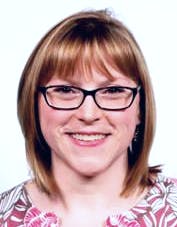It’s undeniable that we need light to thrive. Prior to manmade light sources, the Sun governed our daily activities and the process of sleeping and waking. Our industry revolves around delivering illumination, but it’s exciting to see innovators looking beyond that to how we can deliver better light in the right places, at the right times, and for the greater good. This is the crux of what we call human-centric lighting (HCL), or lighting for health and wellbeing.
It’s the drive to understand the influence of light on our bodies and minds and how to apply this knowledge that sparked the conference on Lighting for Health and Wellbeing to be held this July. The program will deliver scientific information on the impact of light as well as how to apply this information for product development and specification, and will close with a panel on metrics and characterization of lighting for health and wellbeing.
There has been much discussion over the effects of blue-rich light — when and how much of it is appropriate, visual and nonvisual effects, and how to use the light for specific purposes. In healthcare environments, tunable lighting has shown benefits to both medical staff (such as providing better visibility in operating rooms) and patients who need special care (such as those suffering from neurological conditions that disrupt their behavior and circadian rhythms). We announced the conference keynote speaker Dr. Shadab Rahman recently, and I’m sure you’ll find his talk on dynamic lighting compelling. Read on for more healthcare highlights from the conference program…
Learn more about human-centric lighting and how light promotes health and productivity at the 2017 Lighting for Health and Wellbeing conference July 27 in Newport Beach, CA:lightingforhealthandwellbeing.com
- Martin Moore-Ede serves as chairman and CEO at Circadian Light, which develops LED fixtures that deliver white light while regulating the bio-active blue content to sustain human health and productivity. During his medical training, Moore-Ede experienced firsthand the rigors of long hours that disrupt the body’s natural cycles, which of course can lead to degraded mental acuity and physical performance. One of the observed impacts of shift work is a correlation between overexposure to blue-rich light in the evening/overnight period and increased risk of obesity, diabetes, and metabolic syndrome. During his presentation, “Taking the obesity and diabetes risk out of light at night,” Moore-Ede will explain study results comparing volunteers exposed to conventional blue-rich LED lights with those who were exposed to blue-irradiance-depleted LED light sources.
- Robert Karlicek, director of the Center for Lighting Enabled Systems & Applications (LESA) and professor at Rensselaer Polytechnic Institute, has spent years developing advanced optoelectronic systems and put his experience to use in evolving studies on LED lighting. In “Pursuing evidence-based applications of SSL in a healthcare setting,” Karlicek will present LESA’s latest research on developing a programmable lighting system for hospital patient rooms, as well as instrumentation that can accurately capture the environmental conditions, sharing the multidisciplinary approach the work required. The research has been conducted to help fill the voids in evidence regarding the advantages of SSL customized for healthcare settings, such as increased alertness and sleep improvements, along with the potential for faster healing.
- Finally, in “Spectral Design of the Healthcare Environment,” Robert Soler will tackle criteria for visual requirements along with the effects of light exposure and how to deliver a thoughtful design that benefits both patients and staff in healthcare environments. Now the vice president of human biological technologies and research at BIOS Lighting, Soler has unique insight into circadian entrainment and spectrally tunable light due to his prior work as a research leader with NASA on an LED lighting system for the International Space Station (ISS). In such a controlled and restricted environment, it’s critical to consider all influences on the physical condition of astronauts, so I think it’s safe to say that Soler has unique experience and knowledge to share on how best to deploy cutting-edge lighting for the needs of the space, the tasks, and the people within it.
I’ve touched on only a portion of the day-long conference program here. There’s a lot more to learn and the networking opportunity with like-minded professionals can’t be missed. Check out the full program and register at http://lightingforhealthandwellbeing.com/usa/.






